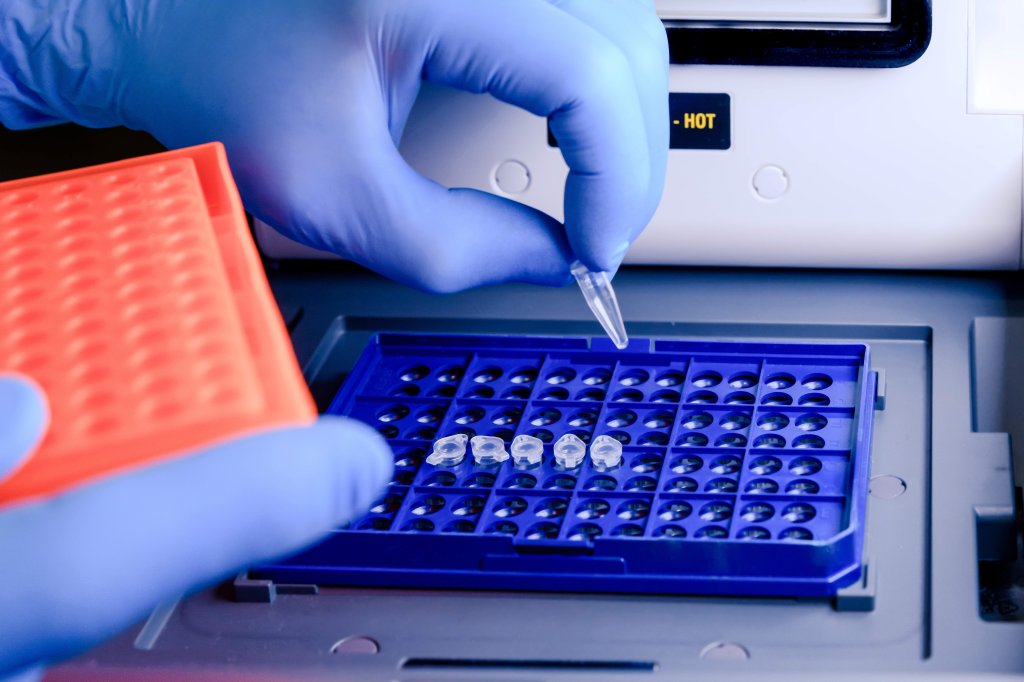Navigating Bioscience Plastics
Biosciences increasingly rely on plastics for everything from lab equipment to prosthetics and implants. The versatility, ease of sterilization, affordability, and lightweight nature of plastics make them ideal for medical and scientific fields. Here’s a closer look at the types of materials used and how to choose and use them well.


An Expert is just around the corner.
With over 100 years of combined product knowledge and industry experience, we are confident our plastics experts can help you find a solution for your application.
Factors to Consider When Selecting Plastic Materials
When choosing plastic materials for bioscience applications, your organization should consider the following factors:
1. Compatibility with Biological Samples and Reagents
The integrity of samples is critical when working in the biosciences field, and as such, you need to ensure the plastic you choose is compatible with the examples you will store or collect. In addition, you need to check compatibility in applications involving reagents. The plastic cannot impact the effectiveness of the reagent or the integrity of the sample, and the items stored inside should not affect the integrity of the plastic.
2. Chemical Resistance and Inertness
Similarly, you need materials in bioscience that are resistant to chemicals. When adding reagents or using chemical methods to sanitize your materials, you must know there won’t be a chemical reaction. Inertness is also essential. Inert materials do not respond or interact with biological tissue, thus not changing the materials stored inside them.
3. Sterilization Methods
Medical equipment and other bioscience products must be properly sterilized before and after usage. Whether you sterilize chemically or use heat, the material must be compatible with the sterilization method used.
4. Mechanical Properties
Finally, consider the mechanical properties of the plastic material. Is it scratch and impact-resistant? Will it withstand years of use? Will it resist fading when sanitized? Does it have flexibility if needed, such as using flexible plastic tubing? The answers to these questions will determine how durable the material will be. You’re investing significantly into the supplies you purchase, so you want them to be as durable as possible.
Types of Materials Used in Biosciences
Four specific categories of plastic materials work well in the biosciences industry but for different applications. These include:
Thermoplastics
Thermoplastics are flexible, transparent, and affordable. These plastics are used for bags, tubing, containers, and biohazard transportation materials. They also have low permeability, so they work well for certain types of lab equipment.
Thermosets
Thermosets are strong and durable. These plastics harden after being molded and hold their shape well. Both epoxy resin and phenolic resin are often used in biosciences.
Elastomers
These plastics stretch easily but return to their regular shape. Rubber, including both natural and synthetic, is a common type of elastomer used in the biosciences for everything from tubing and seas to PPE, such as rubber gloves.
Biodegradable plastics
For single-use items in the biosciences, biodegradable plastics help cut down on plastic waste by offering an option that will break down under the right conditions.
Commonly Used Plastic Materials in Biosciences
While thermoplastics, thermosets, elastomers, and biodegradable plastics are all commonly used in biosciences, specific types of plastics within these categories are particularly helpful. These include:
1. Polyethylene (PE)
PE is a durable, flexible, and chemically resistant product that is often used in containers, bags, and tubes. It is also available as a thin film material. It has a low permeability to gases and liquids, making it a good choice for plastic lab equipment. This material is self-lubricating, lightweight, and recyclable.
2. Polypropylene (PP)
Polypropylene is known for its high-temperature resistance. In biosciences, this makes it a good choice for items that need to go through the autoclaving process for sterilization. It also has a high mechanical strength, so centrifuge tubes are often made from this plastic. This polymer has a high thermal expansion coefficient, which can impact its temperature resistance, and it may break down under exposure to chlorinated solvents and UV light.
3. Polyvinyl chloride (PVC)
The versatility and low cost of PVC make it a popular choice for tubing in biosciences. Tubes to transfer liquids and gasses and bags to store blood and medical products can all be made from this material. Its durability makes it a prime choice for rotors in centrifuges. However, it has limited thermal capabilities and is damaged by several different solvents, so it can only transport materials that won’t damage it.
4. Other Plastic Materials
While PE, PP, and PVC are the three most common, additional plastics are also used in the biomedical field. Epox resin works well for coatings and encapsulation of materials because it bonds well to the base material. Phenolic resin can withstand high temperatures without changing its shape, and it’s also flame-retardant, making it popular as an electrical insulator. Both of these materials are often found in prosthetic devices.
Specific Applications and Best Practices
Plastics are quickly becoming the go-to option for medical equipment in specific applications. These include:
Laboratory Equipment – Lab equipment must keep samples from getting contaminated, and flexibility is often necessary to run lines and tubing. Plastics that are not easily permeated by other materials and that are soft and flexible work well for these applications. Impact or heat resistance can also be important in a lab environment.
Medical Devices – Medical devices, such as catheters and syringes, are often single-use. The affordability of plastics makes them ideal for these. For items like implants placed inside the body, the lightweight nature of plastics and their lack of reactivity to biological material make them work well.
Pharmaceutical Packaging – Sterile packaging that is flexible and lightweight is necessary for packaging medications. Impact and shatter resistance is also impregnation to protect the medications' integrity.
As you choose plastics for biosciences, ensure they comply with all current regulatory standards. This may include looking for specific certifications for the materials. Biocompatibility testing and assessment to ensure no reactivity between the plastic and the samples it will contain is also important. By following these rules and regulations and performing proper testing, you can ensure that the plastics you choose will serve your applications well.
Contact Piedmont Plastics
For more information about how performance plastics can improve your biomedical applications, contact your local Piedmont Plastics branch to speak with one of our material experts. With numerous locations throughout North America, we’re confident in our ability to supply you with the exact materials you need.
Find Your Local Branch
